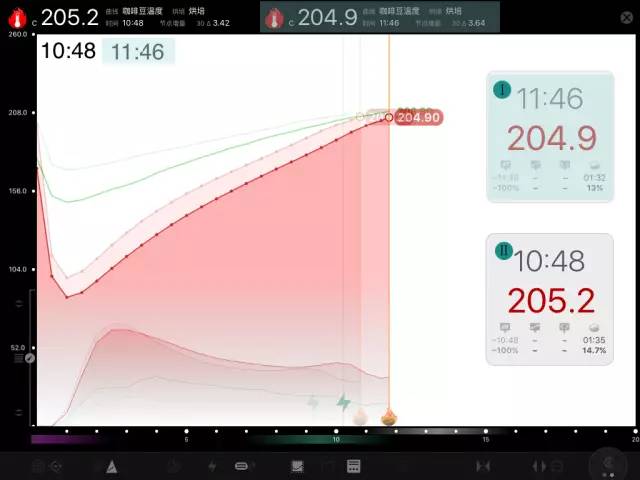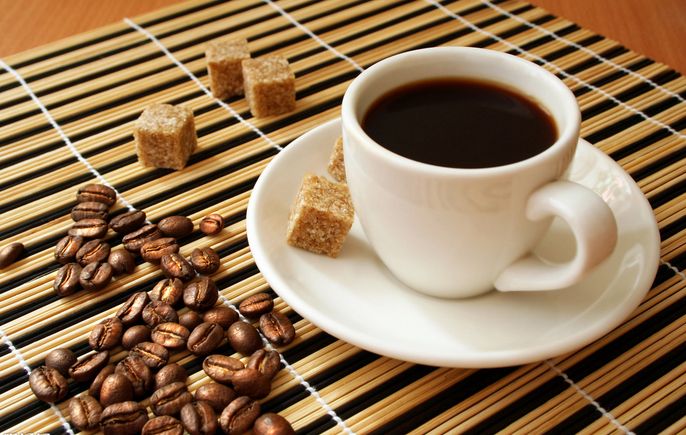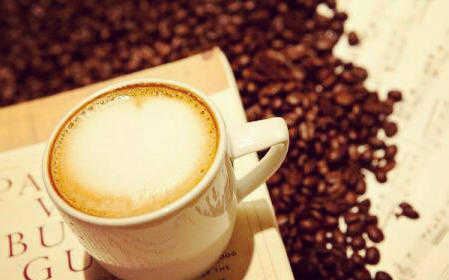One cup of coffee and two curves
This time we were in a playful state of mind and did a test across "time and space". From the feedback results, the results were not bad, the friend joked, you are going to open up a new world of cup testing (network cup testing), funny.
A total of 37 copies of this event have been sent out, plus I am now drinking some friends to test, I believe that there should be more than 60-70 people playing this game. To this day, I have received a lot of feedback, and some of them want to wait for the coffee to grow for a while before testing.
Let's make a summary of the experiment based on the current feedback.
❖ experimental process
First of all, let me introduce the process and results of our own offline testing.
Offline, I've tested it twice.
The first time was made after the baking.
Test method: Cup test
Grindability: 20 mesh screen pass rate 80%
Water temperature: 96 ℃
Bean grinder: Huijia zd10
Powder-to-water ratio: 1 stroke 16.5
Tds: curve 1 / 1.53% curve 2 / 1.29%
Test results: curve one flavor is more balanced and better sweetness
The second aroma of curve is more prominent and the acid quality is higher.
The first experiment was that I deliberately made the concentration very high.
Try the inclusiveness of these two curves, and the result seems to be not bad.
The second experiment is to ensure that the experimental data are more reliable.
So I found a big brother's cafe and made it with his buddies.
Test method: Cup test method
Degree of grinding: EK43 grinding scale 5
Powder-to-water ratio: 1: 18
Water temperature: 96 ℃
Tds: curve 1 / 1.27% Curve 2 / 1.18%
Experimental results: the first layer of the curve feels stronger and the body is thicker, but there are some miscellaneous smells at the end (miscellaneous smells are an interesting topic that will degrade below)
Curve 2: the aroma is prominent, the acidity rises, and the flavor of coffee changes greatly after cooling.
❖ about feedback
Recently, some testing partners have added me Wechat, and some have told us the test results in other ways. First of all, thank you very much for your participation.
Judging from the feedback received, it is roughly the same as the result of my above test.
But the only difference is that the preferences are different. Proportionally, there will be more people who like curve one, and people who like curve two will also have it, and this will also happen during a test at a friend's cafe.
As for the problem of taste, I think it is normal to vary, and I also find a more interesting problem. Baristas and enthusiasts usually prefer curve two, probably because he is sour and pleasant, but he drinks too much coffee, or friends who don't drink coffee very much prefer the result of curve one.

In fact, at the beginning of the article, there is a title called roasting determines flavor orientation. I don't know if you have found that coffee roasting is a very amazing thing, but also a very neurotic thing (such as a summer fire).
I believe that the tested friends all think that the results of these two curves are quite good, but the flavor orientation is different.
So how to explain the flavor changes caused by these two baking methods?
We can see from the picture above.
The first baking method takes longer than the second baking method.
From the warming situation, the opening is relatively flat.
The line of the second baking method looks steeper.
It can be seen intuitively
As a result of the first roasting, the coffee will be more comfortable and softer to drink, while the second will be more lively, which can be shown by the aroma.
From the tds test results, we will find that although the bean temperature is the same, but the baking time will lead to the color value of the baked and extracted results will be very different, of course, the flavor orientation will be different.
Then it will also give rise to many new problems.
For example, the gold cup is not tasty, extraction-related, and so on.
Let's study it later.
Summary of ❖ Baking
Through the testing activities, I can also intuitively see everyone's preferences. Usually we will use the first baking method, although we abandon some aroma problems, but we pay more attention to the existence of taste, coffee is mostly used to drink, we hope that more people can try to drink, rather than the first sip will make the public too sour to try.
In the first curve, even if the coffee cools down, the flavor will still be highly stable, and some friends have tested the bean's first roasting method, and the extraction performance is good after two months. This is also one of the important reasons why we consider how to bake.
But this is not the case. The beans tested in this experiment are extremely hard beans at high altitudes in Guatemala in Central America. I would also like to invite the raw bean supplier of this coffee for this test, and his test results are roughly the same. but it is suggested that the baking degree should be delayed a little longer. I also think that the extremely hard beans of Central American coffee should make him develop more fully.
This may not be the case for coffee from other producing areas, is it?
Careful friends will drink there will be some slight smoky and astringent feeling in the No. 1 curve. Now let's explain the source of this problem.
For the sake of experimental consistency, we basically don't make any other adjustments during baking, so this little bad taste comes from the size of the throttle, which we can't adjust even if we find it during baking.
The roasting of our coffee will also be adjusted to medium roasting in the later stage.
Important Notice :
前街咖啡 FrontStreet Coffee has moved to new addredd:
FrontStreet Coffee Address: 315,Donghua East Road,GuangZhou
Tel:020 38364473
- Prev

Want to drink coffee but too bitter, add sugar and afraid of high calories? Try adding a pinch of salt.
Follow the caf é (Wechat official account vdailycom) found that the beautiful cafe opened a small shop of its own, but it is bitter to drink coffee, sugar and afraid of high calories? Maybe you can try to add a pinch of salt to not only reduce the bitterness, but also make the coffee more mellow. This secret recipe comes from a study published in the British journal Nature, which says that sodium ions in salt can inhibit bitterness and increase bitterness.
- Next

Coffee roasting from a physical point of view
Following Jiabei (Wechat official account vdailycom) found that Beautiful Cafe opened a small shop of its own. Color deepens the color of coffee beans from yellowish green to light brown, and then gradually to brown, brown, dark brown. This is because the starch in raw coffee beans is converted into sugar, which is further coked. The change in color is the most easily observed coffee roasting.
Related
- Beginners will see the "Coffee pull flower" guide!
- What is the difference between ice blog purified milk and ordinary milk coffee?
- Why is the Philippines the largest producer of crops in Liberia?
- For coffee extraction, should the fine powder be retained?
- How does extracted espresso fill pressed powder? How much strength does it take to press the powder?
- How to make jasmine cold extract coffee? Is the jasmine + latte good?
- Will this little toy really make the coffee taste better? How does Lily Drip affect coffee extraction?
- Will the action of slapping the filter cup also affect coffee extraction?
- What's the difference between powder-to-water ratio and powder-to-liquid ratio?
- What is the Ethiopian local species? What does it have to do with Heirloom native species?

